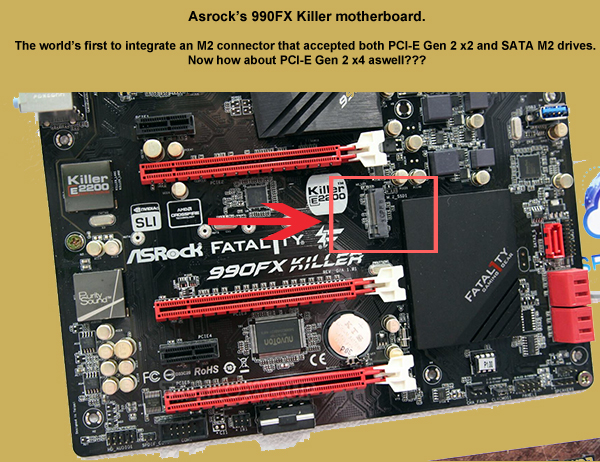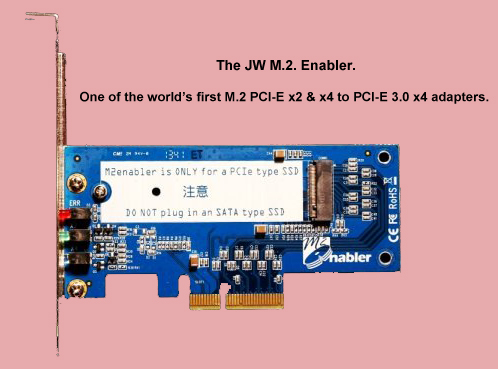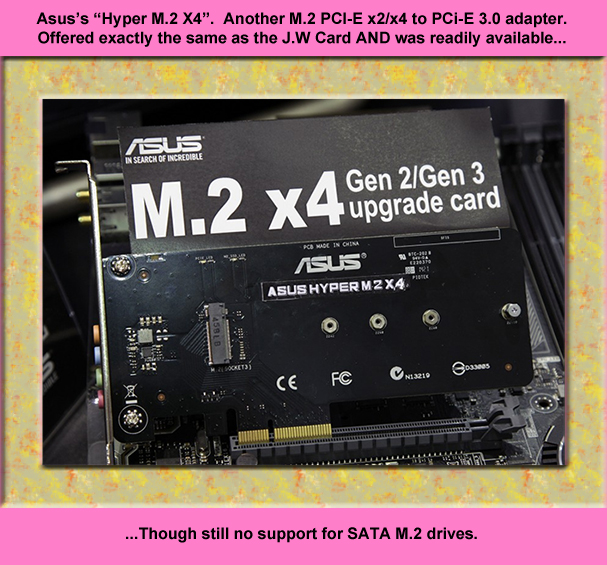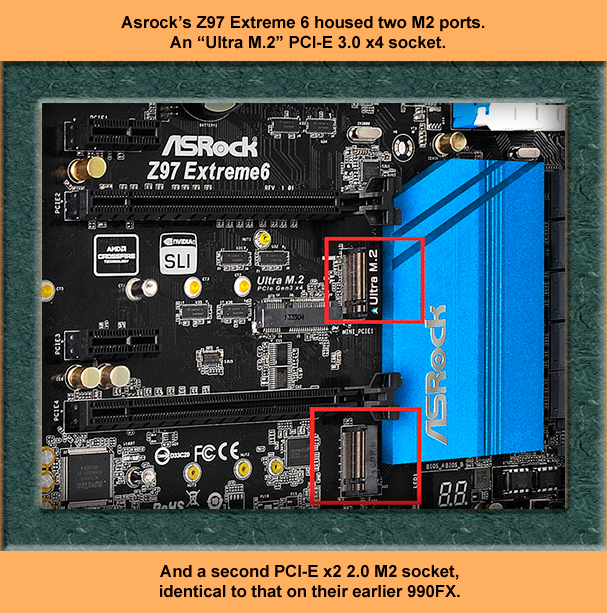M.2. Please Just Standardize
Eventually and one might hope, mercifully. Certain OEMs began to combine the practical with the profitable.

And Finally…

The JW M.2 Enabler was a PCI-e 3.0 x4 card and supposedly supported all available types of PCI-E M2 SSDs – Gen 2 x2 like the Plextor M6e and Gen 2 x4 like the Samsung XP941.
Moreover, being a 3rd generation PCI-E device, it supplied the installed drive with enough liberal lashings of bandwidth to reach speeds of almost 40 gigabits per second, a fitting future proof solution to an infuriatingly complex past. Such a shame that it was impossible to purchase and didn’t support SATA M2! But wait…there was yet more.

So, to cap this dastardly disk dashing farce once and for all…

Asrock’s solution was to furnish their upper-mainstream instrument of maternity with two separate M.2 ports.
The first, an “ultra M.2” port was allocated four PCI Express 3.0 lanes directly from the CPU, thus eluding any chipset latency and bestowing the same bandwidth as the Asus and JW cards (almost 40GBPS) to any existing and future PCI-E x4 M2 drives. The Second M2 socket (a PCI Express 2.0 x2) was a replica of that on the company’s 990FX “killer” board mentioned above.
Incredibly and at long last, this port would allow all the drives discussed (the Toshiba, Plextor AND Samsung) to be recognised by the system, though any x4 drive (those with the single “M” Key) would be limited to a speed of 10 GBPS, the maximum granted by two second generation PCI Express lanes.
The above may well be added to as history continues to germinate, though what is written already surely illustrates the hazards encountered by the early adopter and makes manifest the terrifying consequences of committees, exhibitions and an irrational fear of simplicity.




